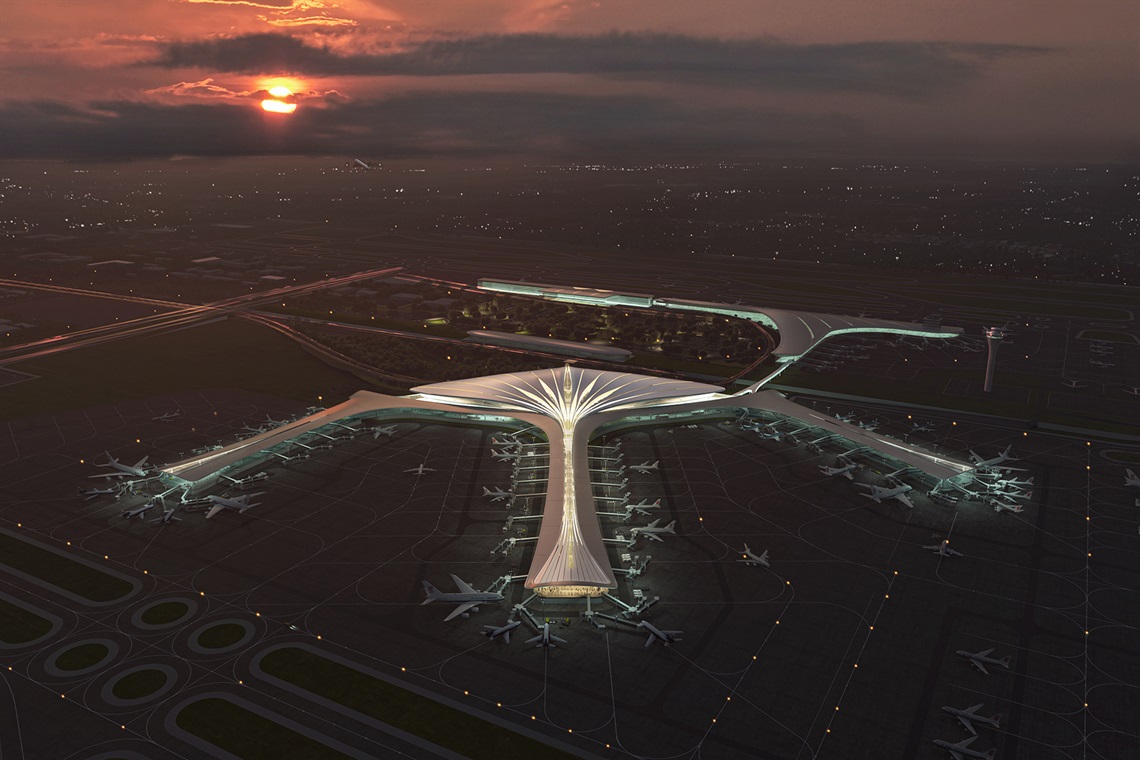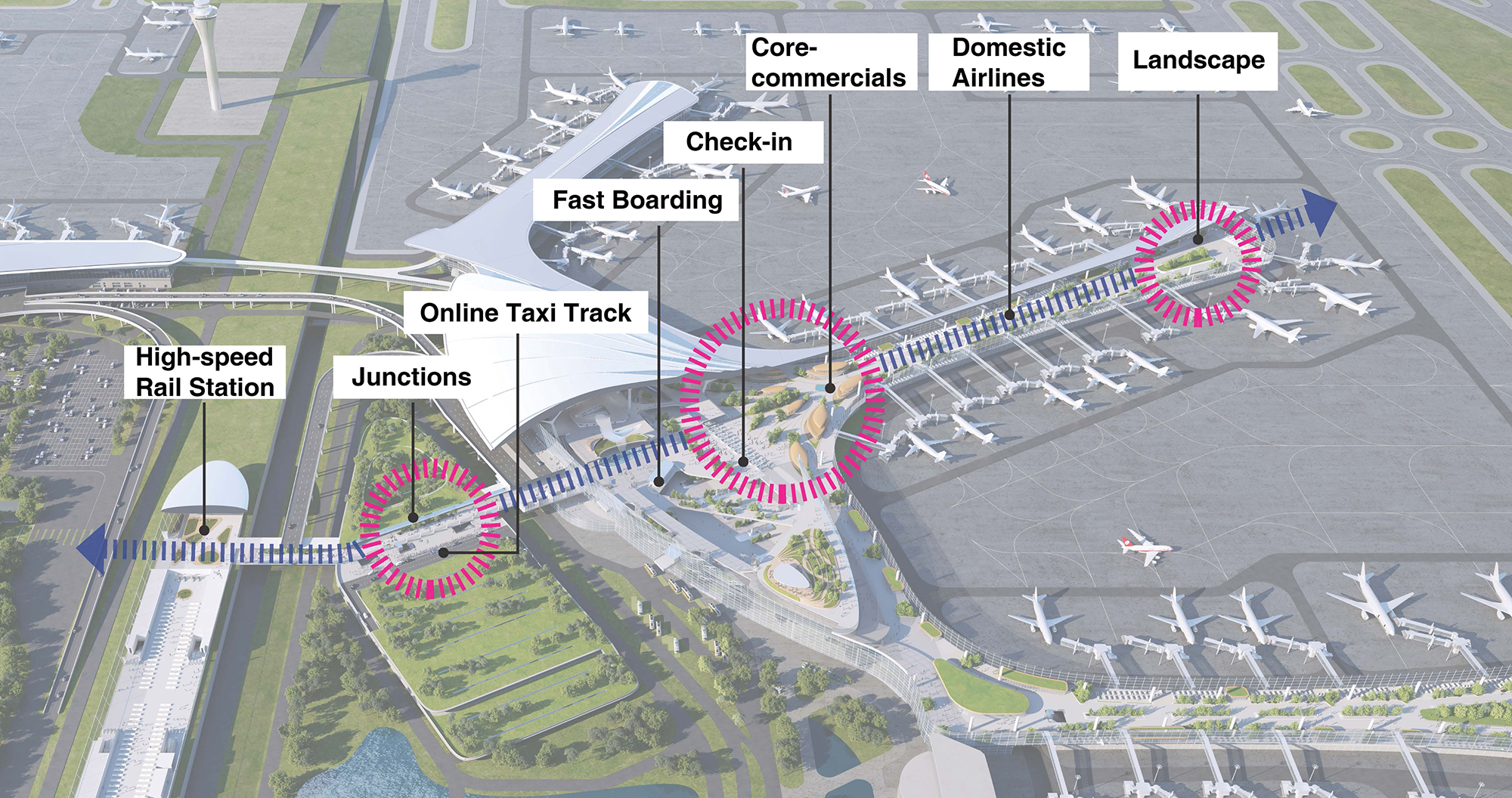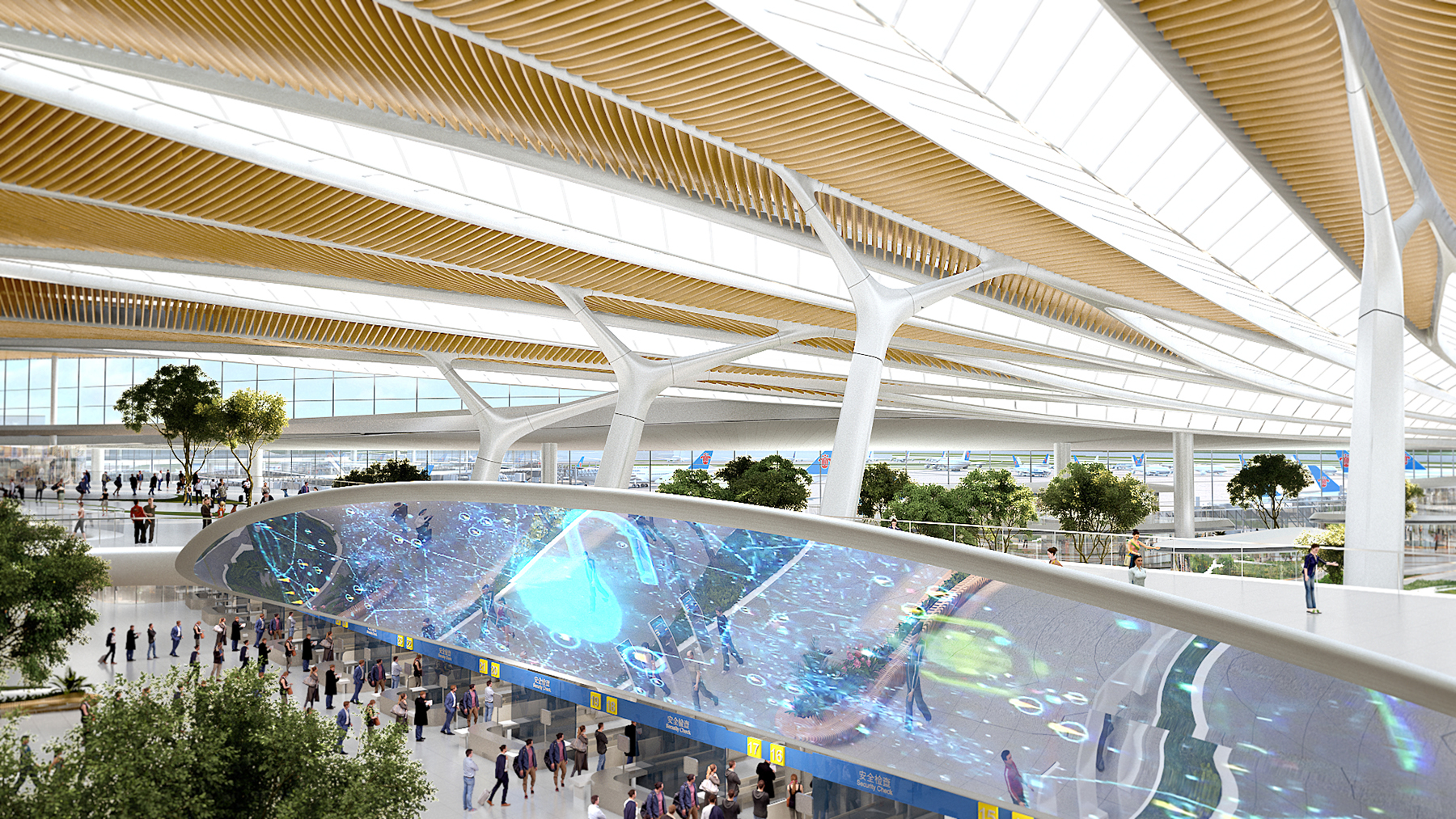By David Jen
China’s breakneck airport-expansion effort continued in February with the selection of the final design for a third terminal at Changchun Longjia International Airport in Jilin City, which is in the Jilin province in the country’s northeast.

Designed by Beijing-based MAD Architects in collaboration with China Aviation Planning and Design Institute Co. Ltd. and Beijing Institute of Architectural Design Co. Ltd., the 270,000 sq m terminal will contain 54 aircraft gates and expects to handle 22 million passengers annually, according to written press material provided by MAD.

A central feather-shaped design — “a nod to the airplanes that will be ascending and descending from its terminals throughout the day,” writes MAD — will branch out into three fingers that will house the aircraft gates.
The design team took care to minimize the distance between the terminal entrance and the east expansion of the Longjia high-speed rail station, less than 200 m away. One-third of passengers entering or exiting the airport since 2018 used the intercity railway, according to MAD.

With 248 airports in operation in 2021, China plans to expand to 400 airports by 2035, according to its National Comprehensive Three-Dimensional Transportation Network Planning Outline released in February 2021, amounting to an average of more than 10 new airport openings per year.
The outline identifies six main axes, seven corridors, and eight channels across the country designed to strengthen China’s transport network enough to meet a 3.2% average annual passenger growth rate expected through 2035.
Changchun, roughly 19 mi southwest of the airport, serves as part of the Harbin-Changchun clusterat one end of the network’s Beijing-Harbin corridor. The city is also the capital of Jilin province, which has a population of about 23 million people.
Sharing borders with North Korea and Russia, Jilin provides abundant forest and mineral resources, including oil shale, nickel, and magnesium, according to the State Council Information Office of China.
In response to the region’s cold climate, which averages about five subfreezing months per year, the terminal design team incorporated a wood finish into the interior ceiling to create a warm, homelike experience for passengers, according to MAD.

Indoor gardens complete with trees, ground cover, and water features will also help reflect “the charm of Changchun as a ‘garden city’ through the creation of what the design team has referred to as a ‘garden airport,’” according to the MAD press material.

China’s aviation industry transported 441 million passengers in 2021 — a 5.5% increase over the previous year but well below the 660 million passengers seen in 2019, the year before the COVID-19 pandemic — according to Statistical Bulletin of Civil Aviation Industry Developmentreleased by the Civil Aviation Administration of China.
In comparison, airlines in the U.S. transported 598 million passengers in 2021, according to a report called Air Traffic by the Numbers, released by the Federal Aviation Administration in May 2022.
MAD says the timeline for the terminal’s construction start and completion has not been announced.
This article first appeared in Civil Engineering Online.



